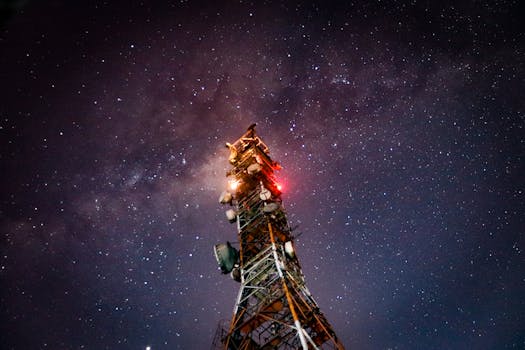
The Rise of Mega-Constellations: Latest Updates in Satellite Telecommunications
Focus Keyword: Mega-Constellations
Mega-Constellations are a new era in satellite telecommunications, with thousands of satellites being launched into space to provide global internet connectivity. The rise of mega-constellations is expected to revolutionize the way we communicate, with faster and more reliable internet access available to people all around the world.
The concept of mega-constellations was first proposed in the 1990s, but it wasn’t until recently that the technology became available to make it a reality. Companies such as SpaceX, Amazon, and OneWeb are leading the charge, with plans to launch tens of thousands of satellites into low Earth orbit over the next few years.
How Mega-Constellations Work
Mega-constellations work by launching a large number of small satellites into low Earth orbit, which are then used to provide internet connectivity to users on the ground. The satellites are equipped with advanced technology, including phased arrays and beamforming, which allow them to communicate with each other and with users on the ground.
The satellites are launched into a low Earth orbit, which is approximately 200-800 km above the Earth’s surface. From this orbit, the satellites can communicate with each other and with users on the ground, providing a network of interconnected satellites that can provide global internet coverage.
Benefits of Mega-Constellations
The benefits of mega-constellations are numerous. One of the main advantages is that they can provide internet connectivity to remote and underserved areas, where traditional internet infrastructure is not available. This can help to bridge the digital divide and provide access to information and services to people who may not have had it otherwise.
Mega-constellations can also provide faster and more reliable internet access, with latency as low as 20-30 ms. This is because the satellites are in a low Earth orbit, which reduces the distance that data has to travel and therefore reduces the latency.
In addition to providing internet connectivity, mega-constellations can also be used for other applications, such as Earth observation, navigation, and communication. They can also be used to provide backup connectivity in the event of a natural disaster or other emergency.
Challenges and Concerns
While mega-constellations have the potential to revolutionize the satellite telecommunications industry, there are also challenges and concerns that need to be addressed. One of the main concerns is the risk of space debris, which can pose a hazard to other satellites and spacecraft in Earth’s orbit.
There are also concerns about the impact of mega-constellations on the environment, particularly with regards to the amount of energy required to launch and operate the satellites. Additionally, there are concerns about the potential for mega-constellations to disrupt the natural environment, such as interfering with astronomical observations.
Finally, there are also regulatory challenges that need to be addressed, such as ensuring that the satellites are launched and operated in compliance with international regulations and that the radio frequency spectrum is managed effectively.
Conclusion
In conclusion, the rise of mega-constellations is a significant development in the satellite telecommunications industry, with the potential to provide global internet connectivity and revolutionize the way we communicate. While there are challenges and concerns that need to be addressed, the benefits of mega-constellations make them an exciting and important area of research and development.